Unlocking the secret to catching fish with style, grace, and a touch of whimsy—welcome to the fascinating world of fly fishing! From unraveling the enigma of flies to perfecting your casting ballet, this article unveils the art, gear, and techniques that make fly fishing an angler's dream. Get hooked, reel in, and let's dive in!
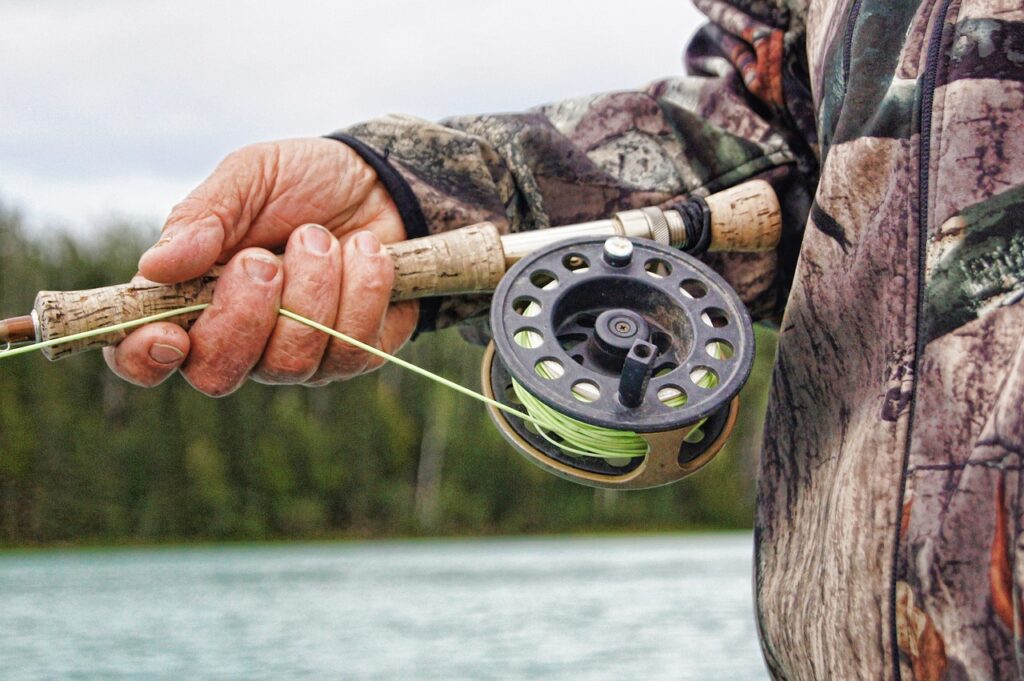
What is Fly Fishing?
Fly fishing, ah, the gentle art of deceiving fish with a dash of finesse and a sprinkle of charm. Now, let me unravel the secrets and unfold the wonders of this captivating pursuit for you. Picture a serene river, sunlight filtering through the trees, as you stand at the water's edge, armed with a fly rod and an assortment of colorful, delicate flies. But what exactly is fly fishing, you ask?
Defining the Dance
Fly fishing is an angling method that stands out from the rest, like a peacock in a flock of pigeons. Unlike traditional fishing techniques that rely on heavy lures or bait, fly fishing employs lightweight, hand-tied flies made of feathers, fur, and synthetic materials. These lifelike imitations mimic the insects or small aquatic creatures that fish feast upon.
The essence of fly fishing lies in the delicate presentation of these flies on the water's surface, luring fish to rise and strike with a mesmerizing dance. It's an art form, a rhythmic ballet where anglers and fish engage in a captivating dialogue.
Unraveling the Threads of History
Now that we've dipped our toes into the definition of fly fishing, let's embark on a journey through its captivating history. Our tale begins in ancient times, when records indicate that fly fishing was practiced in civilizations like ancient Rome, Egypt, and even China.
The evolution of fly fishing continued, with significant contributions from anglers like Dame Juliana Berners in the 15th century, who authored the “Treatyse of Fysshynge wyth an Angle,” a comprehensive guide on the art of angling. Fast forward to the 19th century, when fly fishing gained popularity as a recreational activity, and the modern foundations of the sport were laid.
Casting Through the Centuries
Over the centuries, fly fishing has transformed and adapted, much like a chameleon changing its colors. Advances in technology have led to the development of sophisticated fly rods, reels, and lines that enhance the angler's casting prowess.
The birth of fly fishing clubs and organizations fostered a sense of community among enthusiasts, sharing knowledge, techniques, and tales of the ones that got away. As time progressed, fly fishing spread across the globe, with different regions embracing their unique fishing styles and targeting a diverse range of fish species.
Through trials and triumphs, fly fishing has stood the test of time, captivating generations with its elegance and allure.
Fly Fishing Equipment: Unleashing the Tacklebox Arsenal
Ah, let's delve into the treasure trove of fly fishing gear that equips us for aquatic adventures. As a passionate fly angler, I'm eager to share the essentials that make our pursuit a harmonious symphony of art and angling. So, gather 'round, fellow fishing enthusiasts, and let's explore the must-haves of fly fishing equipment.
Casting the Right Rod and Reel
The cornerstone of any fly angler's arsenal is the fly rod and reel duo, working in perfect harmony like a well-rehearsed dance routine. Fly rods come in various lengths, weights, and materials, each tailored to different fishing conditions and species.
For delicate presentations on small streams, a lightweight and nimble rod with a lower weight rating, such as a 3 or 4 weight, fits the bill. When targeting larger fish or dealing with windy conditions, a sturdier rod with a higher weight rating, like a 7 or 8 weight, proves more suitable.
Reels, on the other hand, serve as a trusty companions, smoothly accommodating and releasing the fly line during the battle with our finned adversaries. Consider factors such as reel weight, retrieval rate, and durability when selecting the perfect reel to complement your chosen fly rod.
Mastering the Art of Lines and Leaders
To complete our fly fishing ensemble, we mustn't overlook the vital role of fly lines and leaders. Fly lines, akin to the lifeline connecting angler and fly, facilitate the graceful cast and delicate presentation that seduces fish. Modern fly lines come in a variety of tapers, weights, and specialized designs, catering to specific fishing conditions and techniques.
Leaders, on the other hand, provide a subtle extension between the fly line and our meticulously tied flies. These transparent strands of tapered monofilament or fluorocarbon help to deliver the fly delicately to the water's surface, fooling fish with their realistic imitation. Choose leaders based on their strength, length, and taper, depending on the fishing scenario you're embracing.
Flies: The Tempting Offerings
Now, let's embark on a journey through the enchanting world of flies. These miniature works of art, crafted with feathers, fur, and synthetic materials, mimic the aquatic morsels that fish find irresistible. From delicate dry flies that dance on the surface to nymphs and streamers that explore the depths, flies come in a staggering variety of patterns, sizes, and colors.
The fly selection process requires thoughtful consideration of the fish species you're pursuing, the prevailing conditions, and the stage of insect hatches. By curating an assortment of flies in your tacklebox, you ensure an enticing selection that matches the fish's palate in any given scenario.
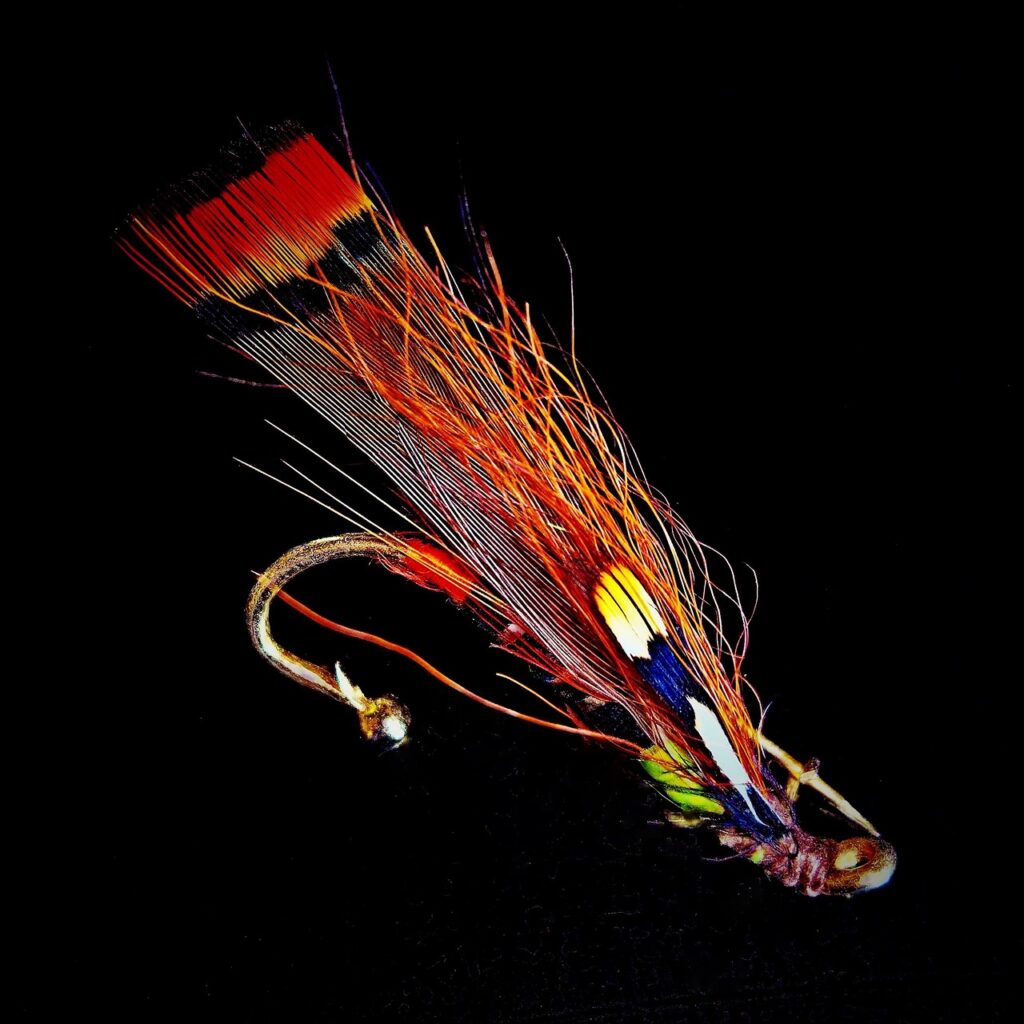
Choosing the Perfect Gear Ensemble
As fly anglers, we relish the quest for the ideal equipment ensemble that harmonizes with our fishing ambitions. When it comes to selecting fly rods, consider factors such as the fishing environment, target species, and personal casting style. Seek advice from seasoned anglers, test the rods in your hands, and trust your instincts to find the rod that feels like an extension of your angling spirit.
Similarly, the reel should balance comfort, functionality, and durability. Seek a reel that complements the rod's weight and balance, providing a smooth drag system to conquer those battles with spirited fish.
Read our blog Gigging for Frogs: A Comprehensive Guide.
When it comes to lines, match their weight to the rod specifications for optimal casting performance. Tailor your selection based on the fishing conditions you anticipate, be it delicate presentations on calm waters or battling winds on the open sea.
Lastly, stock your fly box with a diverse array of flies that suit the target species and mimic their preferred prey. Observe the insect hatches, consult local guides or fellow anglers, and experiment with different patterns to entice even the most selective fish.
Fly Fishing Techniques: Mastering the Art of Casting
Ah, the delicate dance of fly fishing techniques, where precision meets grace in a mesmerizing display. Allow me to be your guide as we embark on a journey through the different casting techniques that bring our flies to life. Whether you're a novice angler or a seasoned enthusiast, let's dive into the world of fly fishing casts and unravel the secrets of their execution.
The Basic Overhead Cast: A Foundation of Fluidity
Let's begin with the fundamental building block of fly fishing: the basic overhead cast. Picture this: your rod held high, line gracefully extended behind you, and the anticipation of the forward stroke building within. With a smooth motion, we unleash the cast, propelling the line forward, and delicately presenting the fly to the awaiting fish.
To execute the basic overhead cast effectively, follow these simple steps:
1. Stance and Grip: Position yourself perpendicular to the target area, feet shoulder-width apart, and maintain a relaxed yet firm grip on the rod handle.
2. Backcast: With the fly line released from the reel, smoothly raise the rod tip, allowing the line to extend behind you in a controlled manner. Aim for a slight pause at the end of the backcast to load the rod.
3. Forward Stroke: Initiate the forward stroke by swiftly moving the rod forward, aiming for a crisp stop when the rod tip reaches the desired position. This energy transfer propels the line and fly towards the target.
4. Follow-Through: Maintain a smooth and controlled follow-through, allowing the rod to come to a natural stop after the forward stroke. This ensures proper line extension and precise fly placement.
The Roll Cast: A Subtle Touch on the Water
Imagine a situation where obstacles, such as overhanging branches or swirling currents, limit your casting space. Fear not, for the roll cast comes to our rescue. This technique allows us to execute a graceful presentation without the need for a backcast, relying on the water's surface to anchor the line.
Follow these steps to master the roll cast:
1. Positioning: Stand with your side facing the target, creating an open space for the line and fly to roll out.
2. Loading the Rod: Start with the rod tip close to the water's surface, and smoothly sweep the rod backward, creating a “D” shape with the line extending behind you.
3. Forward Motion: Initiate the forward stroke by swiftly moving the rod forward, simultaneously lifting the line from the water's surface.
4. Rolling the Line: As the line unfurls forward, allow it to roll out on the water's surface, creating a subtle splash-free presentation.
The Reach Cast: Extending Your Reach with Finesse
Sometimes, a touch of finesse is required to fool those elusive fish in difficult currents or tricky angling situations. Enter the reach cast, a technique that adds a subtle curve to the fly line during presentation, extending our reach and maximizing the chances of success.
To execute the reach cast like a pro, follow these steps:
1. Standard Casting Position: Assume a standard casting position, with your body perpendicular to the target area.
2. Loading the Rod: Perform a standard backcast, loading the rod and extending the line behind you.
3. Repositioning: Just before initiating the forward stroke, subtly move your casting hand and arm in the direction opposite to your target. This repositions the rod and introduces a slight curve in the line.
4. Forward Stroke: Complete the forward stroke, smoothly transferring energy to the line, and gently guiding the fly towards the target with the curved line trajectory.
Tips for Success: Fine-Tuning Your Technique
Now that we've explored these fundamental fly-fishing techniques, let me share some tips to fine-tune your casting prowess:
– Practice, Practice, Practice: Repetition is key to developing muscle memory and refining your casting technique. Set aside time for regular practice sessions to hone your skills.
– Start Slow, Finish Smooth: Focus on the fluidity of your casting motion rather than rushing through the movements. A slow and controlled casting stroke results in more accurate presentations.
– Pay Attention to Line Control: Proper line control is crucial for accurate and delicate presentations. Maintain tension on the line throughout the casting process to ensure a smooth and controlled release.
– Observe the Water and Adjust: Take note of the current, wind direction, and any obstacles that may affect your cast. Adjust your technique accordingly to maximize your chances of success.
With these casting techniques and tips in your angling arsenal, you're well on your way to mastering the art of fly fishing. Remember, it's not just about the mechanics; it's about connecting with the water, understanding its rhythm, and embracing the beauty of this timeless pursuit. So, go forth, my fellow fly anglers, and let your casts soar with elegance and purpose.
Understanding Flies and Fly Patterns: Unleashing the Art of Deception
Ah, the allure of flies in the world of fly fishing! These miniature masterpieces, crafted with meticulous attention to detail, hold the power to entice even the most cunning of fish. Join me as we unravel the secrets of flies and fly patterns, exploring their significance and unlocking the key to successful angling.
The Fly Arsenal: Dry Flies, Nymphs, Streamers, and Emergers
As we journey deeper into the art of fly fishing, let's explore the different categories of flies and their specific applications. Each type possesses unique characteristics that make them effective in various fishing scenarios.
1. Dry Flies: Dancing on the Surface
Picture a serene river scene, with fish gently rising to sip insects from the water's surface. This is where dry flies come into play, imitating adult insects floating on or hovering just above the surface. These buoyant imitations rely on materials that repel water, keeping them afloat and visible to both anglers and fish.
2. Nymphs: Exploring the Depths
Beneath the shimmering surface lies a bustling world of aquatic nymphs, the juvenile form of insects that fish find irresistible. Nymphs are designed to be fished below the water's surface, imitating insects in their developmental stages. These subsurface offerings are typically weighted to mimic the natural movement of nymphs as they crawl, swim, or drift in the currents.
3. Streamers: The Provocateurs
When it comes to enticing predatory fish, streamers take center stage. These larger, more impressionistic patterns mimic baitfish, leeches, and other swimming creatures. Streamers are designed to be stripped through the water, enticing strikes from fish with their lifelike movements. Their size, profile, and action make them effective in enticing aggressive responses from larger fish.
4. Emergers: Bridging the Gap
Between the world of nymphs and adult insects lies a transitional stage known as the emerger. Emergers are flies designed to imitate insects as they ascend from their aquatic habitat to the surface. They represent a moment of vulnerability, making them enticing to fish. These patterns can be fished in both subsurface and surface film positions, creating a tantalizing presentation for discerning fish.
Cracking the Code: Popular Fly Patterns for Success
In the vast realm of fly patterns, certain classics have withstood the test of time and proven their effectiveness across fishing environments and species. While there are countless patterns to choose from, let's highlight a few popular ones that have earned their place in many angler's fly boxes:
– Adams: A versatile dry fly pattern that imitates a range of mayflies. Its simple silhouette and effectiveness make it a staple in any fly angler's arsenal.
– Elk Hair Caddis: Another dry fly classic, the Elk Hair Caddis emulates adult caddisflies. Its buoyancy and high visibility make it a go-to choice during caddis hatches.
– Pheasant Tail Nymph: A tried-and-true nymph pattern, the Pheasant Tail imitates a variety of mayfly nymphs. Its slender profile and natural coloration make it irresistible to feeding fish.
– Woolly Bugger: A renowned streamer pattern, the Woolly Bugger represents leeches, baitfish, and other creatures. Its tantalizing movement and versatility make it a go-to pattern for targeting trout, bass, and other species.
Remember, the effectiveness of fly patterns often depends on factors such as water conditions, time of year, and specific fish preferences. Experimentation and observation are key to discovering the perfect combination of pattern and presentation for each unique fishing scenario.
Target Species and Locations: Unveiling the Prized Catches and Angling Paradises
Join me as we delve into the depths and explore the thrilling encounters that await us in pursuit of trout, salmon, bass, panfish, and the alluring allure of varied angling paradises.
Trout: The Gems of Freshwater
Ah, trout—the iconic symbol of fly fishing. These magnificent fish, known for their vibrant colors and elusive nature, offer an exhilarating challenge to anglers of all levels. Whether casting on meandering rivers, pristine mountain streams, or tranquil lakes, trout present themselves as formidable adversaries, testing our skills and patience. From the native browns and rainbows to the spirited brookies, these species ignite the passion that fuels our angling pursuits.
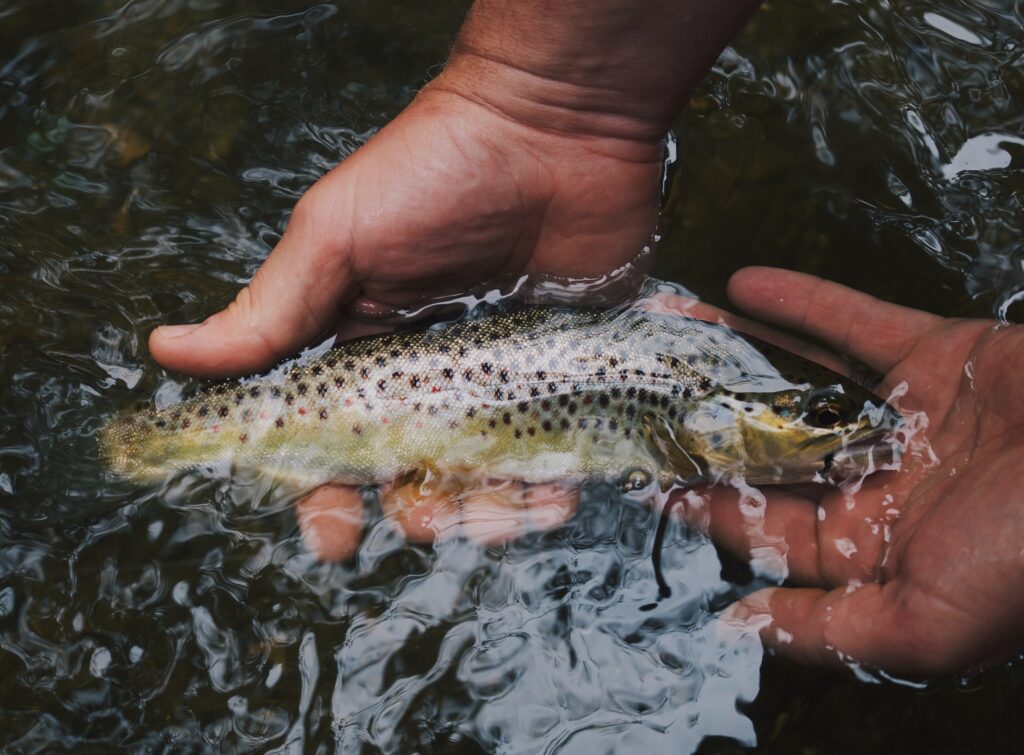
Salmon: The Majestic Migrations
Picture a grand spectacle of nature as salmon embark on their extraordinary journey from the vast ocean to the very rivers of their birth. Salmon fishing, with its tales of strength, resilience, and determination, captures the hearts of fly anglers worldwide. Whether casting on the mighty rivers of Alaska, the pulsating currents of British Columbia, or the serene Scandinavian landscapes, the pursuit of salmon offers a thrilling challenge and a chance to witness nature's remarkable cycles.
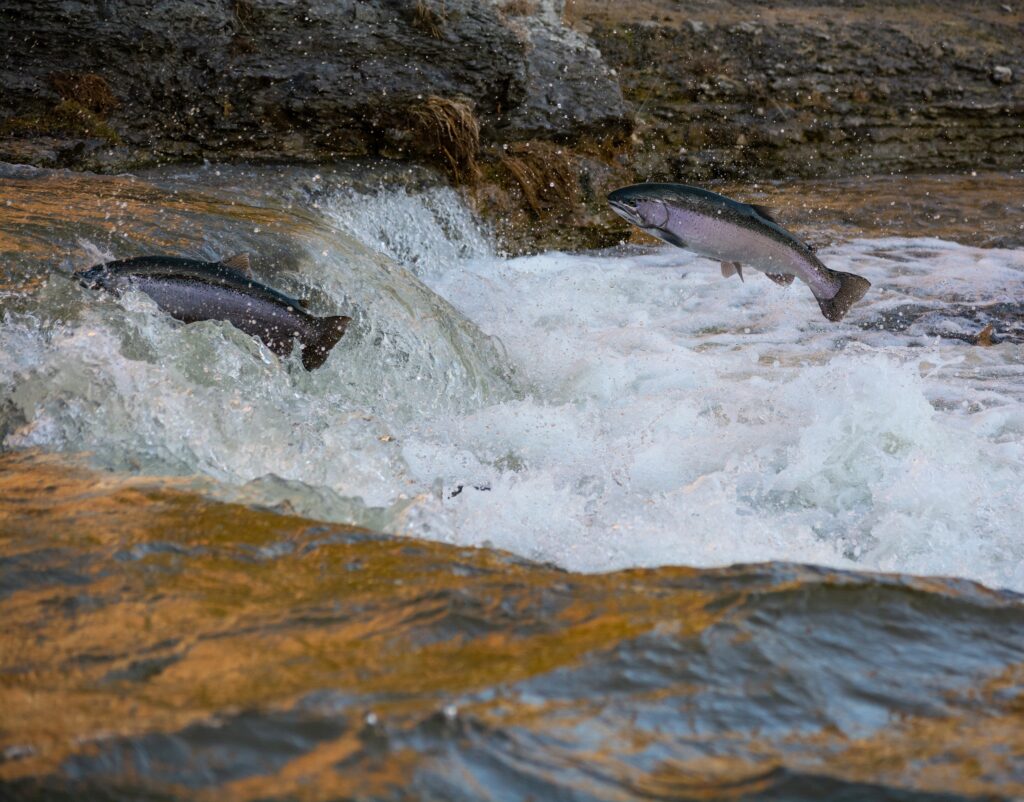
Bass: The Fierce Freshwater Predators
For those seeking explosive strikes and pulse-pounding battles, bass fishing with a fly rod provides an adrenaline rush like no other. Largemouth and smallmouth bass, the fierce freshwater predators, inhabit lakes, ponds, and rivers, waiting to pounce on well-presented offerings. From topwater poppers dancing across the surface to streamers diving through submerged cover, the pursuit of bass showcases the versatility of fly fishing and the excitement of engaging these voracious predators.
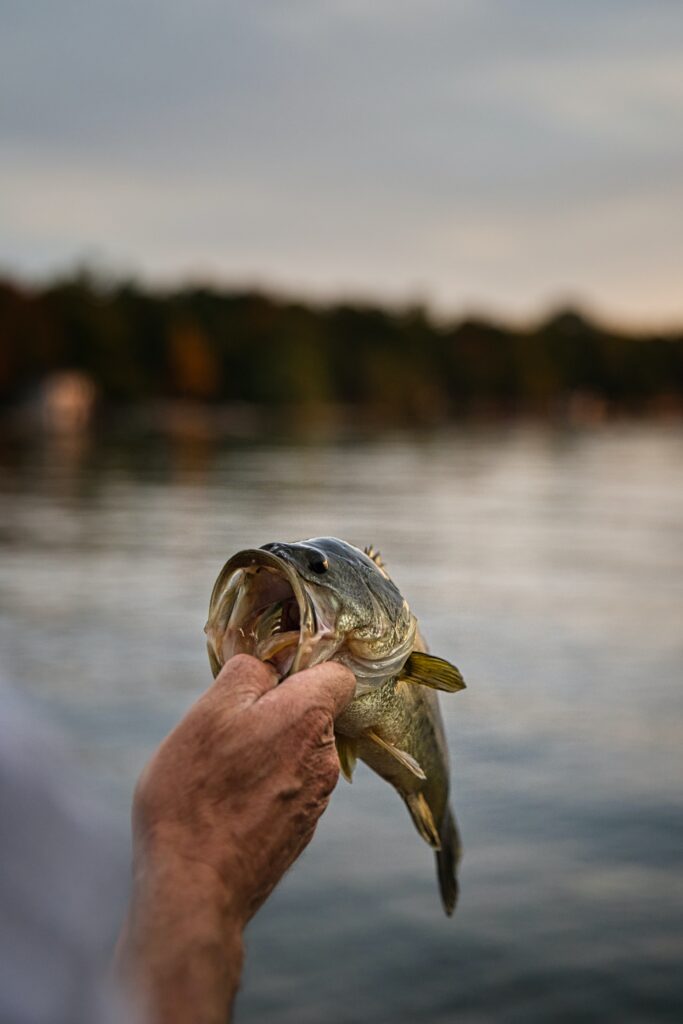
Panfish: The Delights of Warmwater Angling
Amidst the thrill of targeting larger species, let us not forget the humble panfish—bluegill, crappie, and perch—who bring joy to anglers of all ages. These fish, often found in abundance in ponds, lakes, and calm waterways, provide endless entertainment and opportunities for honing our skills. From delicate presentations with tiny dry flies to enticing strikes with nymphs and small streamers, panfish angling offers a laid-back and enjoyable experience, perfect for introducing newcomers to the world of fly fishing.
Angling Paradises: Where Dreams Meet Reality
Now that we've explored the magnificent species that grace our fly fishing dreams, let's embark on a virtual tour of some renowned angling paradises around the globe. Each location holds its own allure and challenges, beckoning us to cast our lines and experience the magic firsthand.
– The Legendary Rivers of Montana: The Big Sky Country is home to legendary rivers like the Madison, Yellowstone, and Big Hole. These fabled waters offer breathtaking landscapes and abundant trout populations, making Montana a pilgrimage destination for fly anglers seeking adventure and pristine wilderness.
– The Majestic Waters of Alaska: From the remote reaches of Bristol Bay to the breathtaking Kenai Peninsula, Alaska is a playground for salmon and trout enthusiasts. Its untamed rivers, teeming with salmon runs and trophy-sized trout, provide a surreal backdrop for unforgettable angling experiences.
– The Enchanting Streams of New Zealand: With its crystal-clear waters and challenging fishing conditions, New Zealand has earned a reputation as a fly fishing mecca. From stalking wild brown trout in gin-clear streams to navigating braided rivers in pursuit of trophy rainbows, this island nation promises a fly fishing adventure like no other.
– The Tropical Flats of the Bahamas: For saltwater fly anglers, the flats of the Bahamas are a paradise of bonefish, tarpon, and permit. Wading through shimmering turquoise waters, presenting flies to these elusive species, and feeling the adrenaline rush of a bonefish sprinting across the flat is an experience that will forever be etched in memory.
Whether you seek the tranquility of a mountain stream, the pulse of a powerful salmon, the explosive strikes of bass, or the serenity of a panfish-filled pond, fly fishing destinations across the globe offer a smorgasbord of opportunities to satisfy our angling desires.
Resources for Learning Fly Fishing: Unlocking the Path to Mastery
Ah, the ever-curious angler, hungry to delve deeper into the art and science of fly fishing! Fear not, my fellow enthusiasts, for I have compiled a treasure trove of resources that will serve as your compass on this exhilarating journey of learning and growth. Let us explore a diverse array of books, websites, videos, and classes that will ignite your passion and propel you toward mastery in the realm of fly fishing.
Books: Where Wisdom Flows
Immerse yourself in the wisdom passed down through the ages by seasoned anglers and master fly fishermen. These books, cherished companions on the quest for knowledge, offer invaluable insights, techniques, and tales that will expand your understanding of fly fishing. Dive into the world of fly tying, casting techniques, entomology, and the art of reading water. Here are a few notable recommendations to get you started:
– “The Orvis Guide to Fly Fishing” by Tom Rosenbauer: A comprehensive guide covering all aspects of fly fishing, from gear selection to casting techniques, presented in an easy-to-understand format.
– “A River Runs Through It” by Norman Maclean: Delve into the mesmerizing storytelling of a fly fisherman's coming-of-age journey, interwoven with the beauty of nature and the complexities of life.
– “Matching Major Eastern Hatches” by Thomas Ames Jr.: Explore the intriguing world of aquatic insects and their imitations, helping you master the art of fly selection and presentation.
Websites: Digital Waters of Knowledge
Dive into the vast sea of fly fishing knowledge that the internet has to offer. From expert blogs to informative articles, online resources provide a wealth of information at your fingertips. Here are a few websites that will serve as your virtual mentors in the pursuit of fly fishing excellence:
– Fly Fisherman: A hub of articles, gear reviews, and tips from renowned fly fishing experts. Explore their vast library of resources covering various aspects of the sport.
– Orvis Learning Center: Access a trove of instructional videos, articles, and podcasts that cater to fly anglers of all skill levels. Delve into topics ranging from casting techniques to fly tying.
– Trout Unlimited: Discover a wealth of conservation resources, fly fishing tips, and information about local chapters that foster community and stewardship in the world of fly fishing.
Classes: Guided Pathways to Expertise
Embark on a structured learning journey by enrolling in fly fishing classes and workshops. These hands-on experiences offer personalized instruction, allowing you to refine your skills under the guidance of seasoned instructors. Seek out local fly shops, community colleges, and fly fishing schools in your area to discover classes tailored to your needs. Engage in casting clinics, entomology workshops, and on-stream instruction to elevate your abilities.
Remember, dear reader, that knowledge is the key that unlocks the gates to mastery. Embrace these resources, explore them with fervor, and allow the wisdom of experienced anglers to seep into your being. With each page turned, website explored, video watched, and class attended, you will inch closer to the pinnacle of fly fishing proficiency.
Tight lines and happy learning, my fellow fly fishing enthusiasts!
